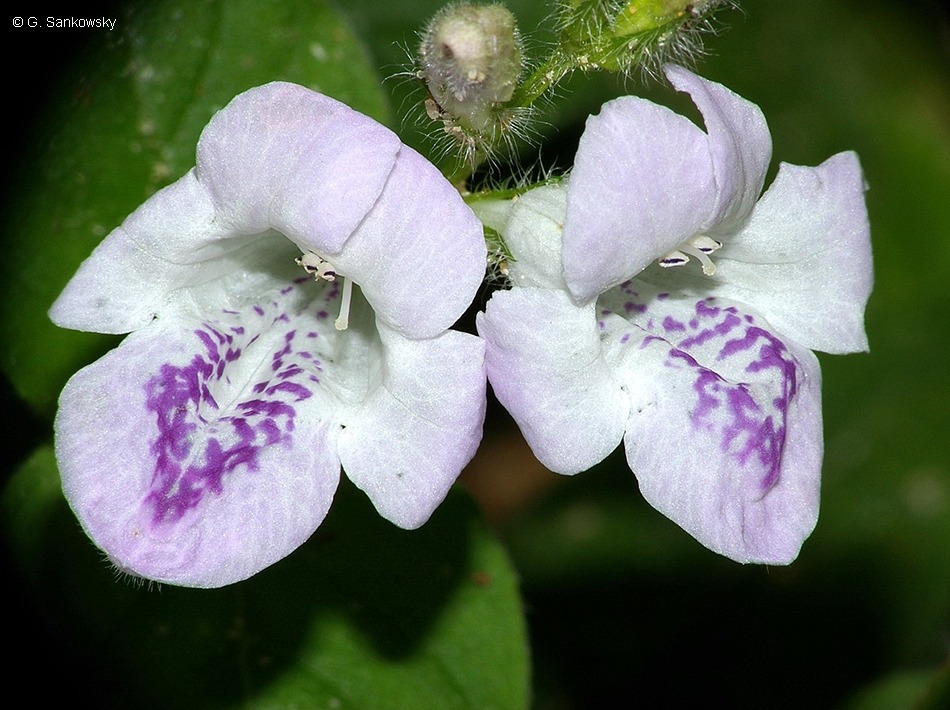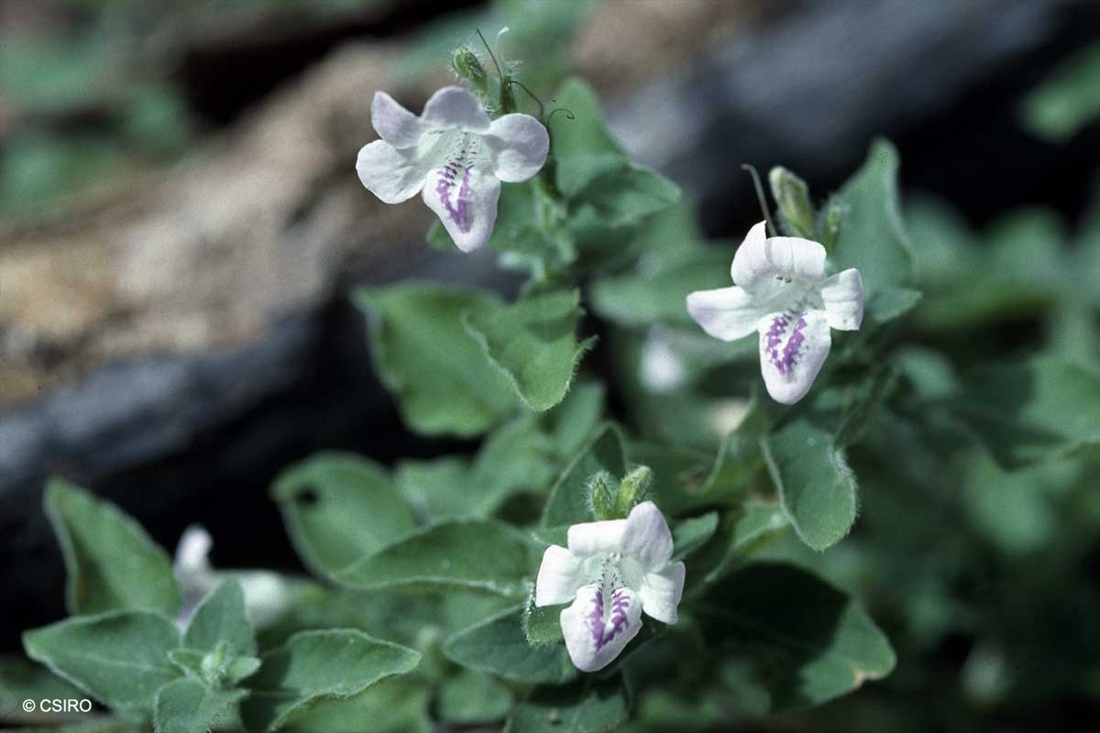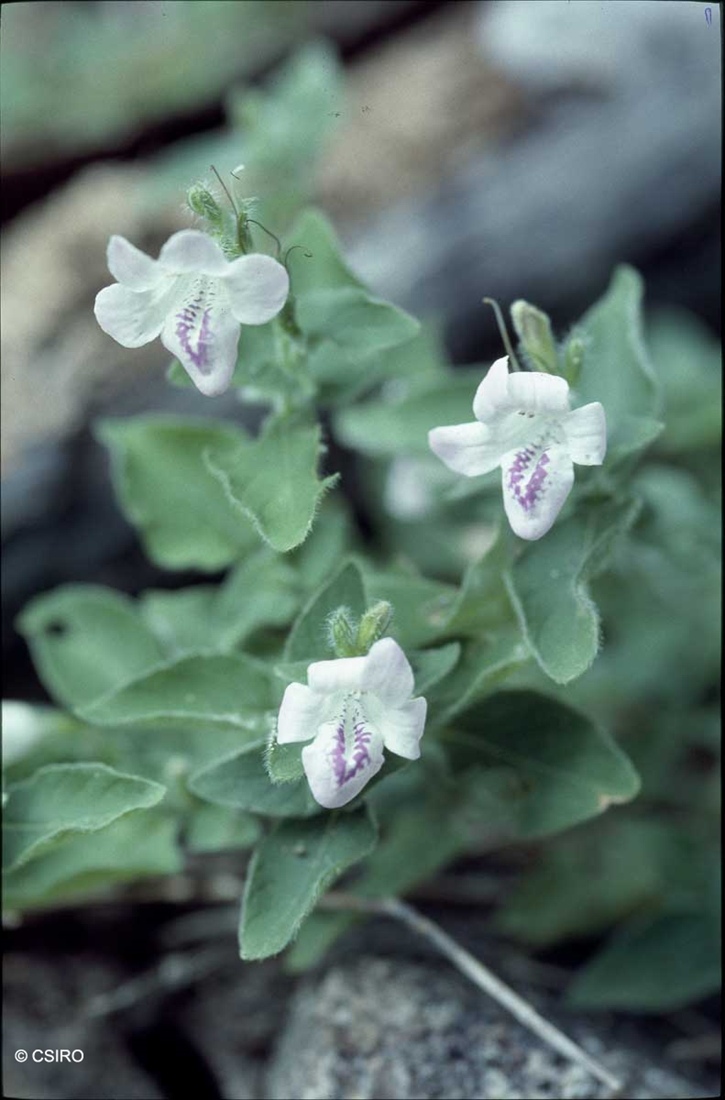Australian Tropical Rainforest Plants - Online edition
Asystasia sp. Newcastle Bay (L.J.Brass 18671)




Provisional HISPID phrase name.
Stem ca. 4-angled, clothed in white hairs.
Leaf blades 20-45 x 15-28 mm, upper and lower surfaces clothed in hairs. Petioles 3-15 mm long, narrowly winged, clothed in hairs.
Calyx lobes shortly fused at the base, lobes narrowly triangular to linear, 6-8 x 0.8-1 mm, clothed in long pale hairs. Corolla tube bell-shaped, 13-14 mm long, upper two lobes fused towards the apex, 7-8 x 6 mm, lateral lobes ca. 7 x 5 mm, lower lip 7-8 x 9 mm, mauve with purple markings. Anthers ca. 1.5 mm long, filaments ca. 7 mm long, Ovary ca. 2 x 1 mm, base surrounded by a cream to yellow shallow cup-like disk. Style slender, 9-11 mm long. Stigma small, globular and terminal.
Cotyledons orbicular, ca. 3 mm diam.
Plants are seasonally deciduous, dying back to perennial rootstock [pers.comm. Garry Sankowsky, 2009].





